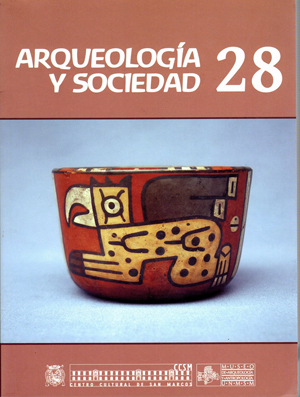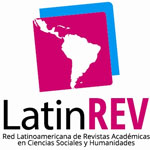GOURDS OF HUALLAMARCA, ICONOGRAPHY AND FUNCTION: COASTAL GENTLEMEN RECIPROCITY AND SYMBOLS OF POWER
DOI:
https://doi.org/10.15381/arqueolsoc.2014n28.e12213Keywords:
Gourds decorated, Ichma, chiefs coastal, Huallamarca, reciprocity.Abstract
In this paper we analyze contextual and stylistically a set of finely decorated gourds, from the collection of gourds Huallamarca recovered in excavations directed by Dr. Jiménez Borja at huaca Pan de Azúcar in 1958. The gourds have studied simple and naturalistic images that refer to a secular field, agricultural and coastal. The large number of decorated gourds in a context of elite tombs, makes us think of a function, which would go beyond the strictly utilitarian. Piles of pumpkins decorated as large plates, carefully stored inside packages would imply at least that the holder would have a household could face a public activity. Reciprocity as a social, political and economic, would be supported in funerary context quality and new symbols of power that characterize the large coastal chiefs and gentlemen of the initial part of the Late Intermediate Period of the Central Coast.Downloads
Published
Issue
Section
License
Copyright (c) 2014 Camilo Dolorier, Lyda Casas Salazar

This work is licensed under a Creative Commons Attribution-NonCommercial-ShareAlike 4.0 International License.
THE AUTHORS RETAIN THEIR RIGHTS:
a. The authors retain their trademark and patent rights, and also on any process or procedure described in the article.
b. The authors retain the right to share, copy, distribute, perform and publicly communicate the article published in the Arqueología y Sociedad (for example, place it in an institutional repository or publish it in a book), with an acknowledgment of its initial publication in the Arqueología y Sociedad.
c. The authors retain the right to make a subsequent publication of their work, to use the article or any part of it (for example: a compilation of their works, notes for conferences, thesis, or for a book), provided that they indicate the source. of publication (authors of the work, journal, volume, number and date).
















